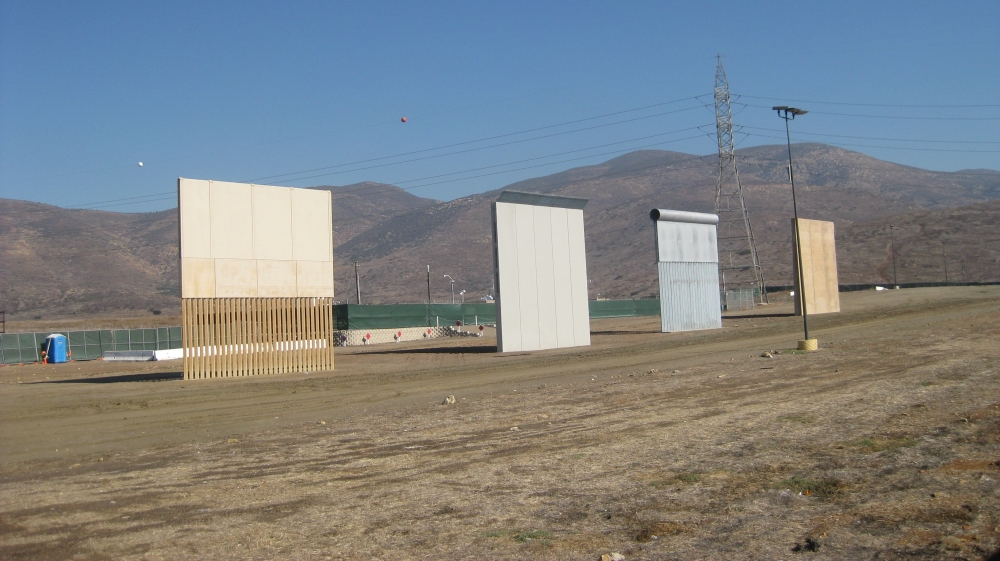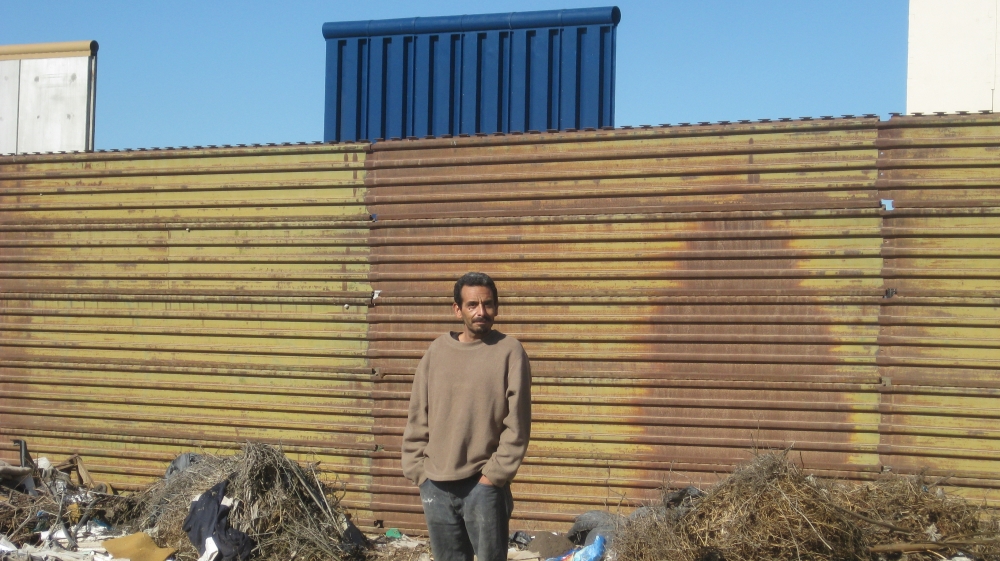Home » World News »
Living in the shadow of Trump's border wall prototypes
Trump set to visit eight prototypes as he tries to make good on his promise to build a wall on the US-Mexico border.
San Diego, California – Eight 18 to 30-foot (about nine metres) tall structures tower above the US-Mexico border in southern California.
The structures, installed in October 2017 in San Diego, are prototypes for US President Donald Trump’s border wall plan.
On the US side, the prototypes represent Trump’s 2016 campaign promise to build a wall at Mexico’s expense. To those living on the Mexican side, the structures and the existing border fence are an ever-present reminder that the US doesn’t want them.
“This is like a game for Trump,” said 22-year-old Alexis Franco Santana, who lives in the shadows of the prototypes in Tijuana, Mexico.
“He is just figuring out what kinds of toys he wants,” Santana told Al Jazeera.
Santana and his girlfriend live in the junkyard along the fence because they don’t have to pay rent – just utilities.
They live in a small, one-room shack built out of reclaimed materials, along with their puppy, Gordo. There is a small TV inside but little else for amenities.
The couple has a campfire stove in their front yard, along with a couch. The backyard is a giant heap of plastic, all left by the junkyard owner. A tattered American flag hangs behind the house.
Santana watched the construction of the prototypes, and said they went up fast.
“No matter how high they build the fence, people will find ways to sneak in,” he said.
Trump to visit prototypes
Each prototype contractor brought their own workers, who built primarily at night to escape the punishing Southern California heat.
The prototypes were constructed in 30 days and stand much taller than the corrugated metal wall that currently marks this part of the border.
On Tuesday, Trump will make his first visit to see the prototypes, prompting calls for rallies both in support of and against the wall.
Enrique Morones, director of the immigrant rights group Border Angels, said that the group will protest Tuesday with a prayer meeting and a rally.
Estimates for how much the border wall will cost range, wildly, from $21bn to $70bn. Trump has said that Mexico will be responsible for paying for the wall – a demand that Mexican President Enrique Pena Nieto has rejected.
Although the number of border arrests has declined since Trump took office, the number of arrests by Immigration and Customs Enforcement (ICE) agents away from the border has surged.
The Trump administration has also gone after so-called sanctuary cities, and states that have policies in place that limit cooperation with federal immigration agents. Last week, the justice department sued California over its sanctuary policies.
‘I know what it’s like to be poor now’
Back in Tijuana, the dirt road separating the houses from the border wall is lined with rubbish, and huge piles of junk, including everything from glass bottles to car tires, line the wall.
Art and graffiti in both English and Spanish decorate the wall. Near the towers, several burnt-out cars sit in the middle of the road.
Guillermina Fernandez, who lives in a house in the Rancho Escondido neighbourhood, right across from the fence and the prototypes, said she and her husband have seen countless people make border crossings in the 23 years they have lived there.
She said that, in the past, hundreds of people would gather here before trying to attempt border crossings, and she would sell them food and beer while they waited.
She said that, sometimes, people would cut holes in the fence and drive entire cars packed full of people into the US.
Nowadays, she said prospective migrants will go further inland to try to cross.
Juan Manuel Hernandez, who lives not far from Fernandez, said the wall and the prototypes are taunting.
Hernandez lived in the US for the majority of his life before being deported to Tijuana. His parents brought him to the US when he was five years old, and he grew up in the Central Valley.
He was deported in 2008 after being prosecuted on an assault charge, which he said was self-defence.
Hernandez’s wife and children are all in the US, and he hasn’t seen them since being deported.
Now he lives in Las Torres, directly across the street from the prototypes.
“Life’s hard over here,” Hernandez said. “I know what it’s like to be poor now.”
Since his deportation, he has thought about crossing back many times, but hasn’t been able to go through with it.
“I kept hearing my mom’s voice saying, ‘Don’t do it, you’re going to get caught,'” he said. “So I haven’t done it.”
When asked about the wall, Hernandez laughed.
He said he doesn’t think it will have an effect in halting border crossings.
He added that people who want to go to the US will find a way.
But, for him, he is stuck in Tijuana, yards from the state he spent most of his life in, but still so far away.
“I never expected to be living here,” Hernandez said. “Never in my life.”
Witness
Mexico: The other side of the wall
Source: Read Full Article






